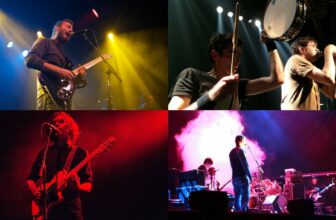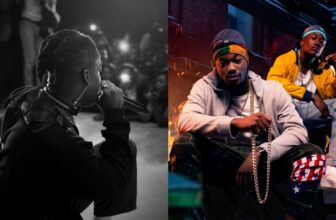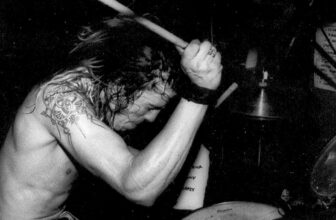Medieval Music – All You Need To Know
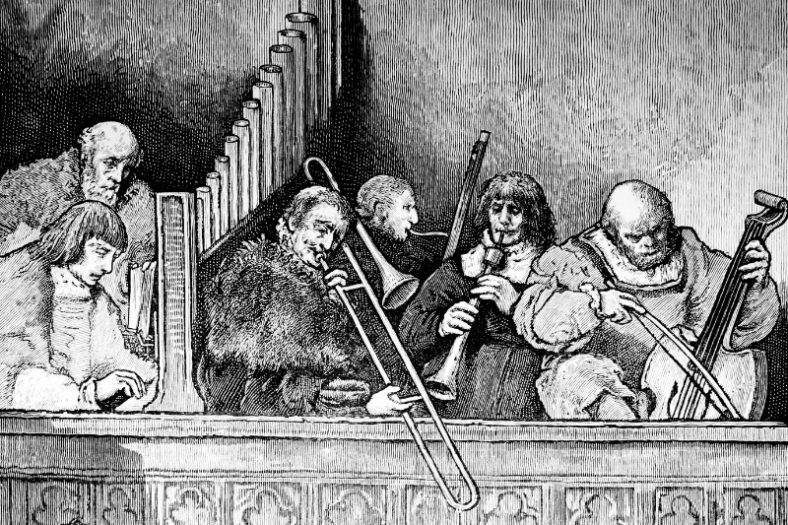
Medieval music is classified as music composed and performed in the Middle Ages until the Renaissance. Have you ever wondered what Medieval music was really like? This article explains everything you need to know about this type of music, from the instruments used, to its characteristics, most popular songs, and different styles.
In 2019-2020, a curious new genre went viral on the internet. It was called ‘bardcore’ and soon many youtube channels popped up with a “medieval” twist on some hit songs of the postmodern period!
The covers included instruments that sound like they are from the olden times and the lyrics are often re-written to imagine them in the context of an earlier period. Here is an example of a bardcore rendition of ‘Pumped Up Kicks’ by the band Foster The People.
Contents
What Is “Medieval” Music?
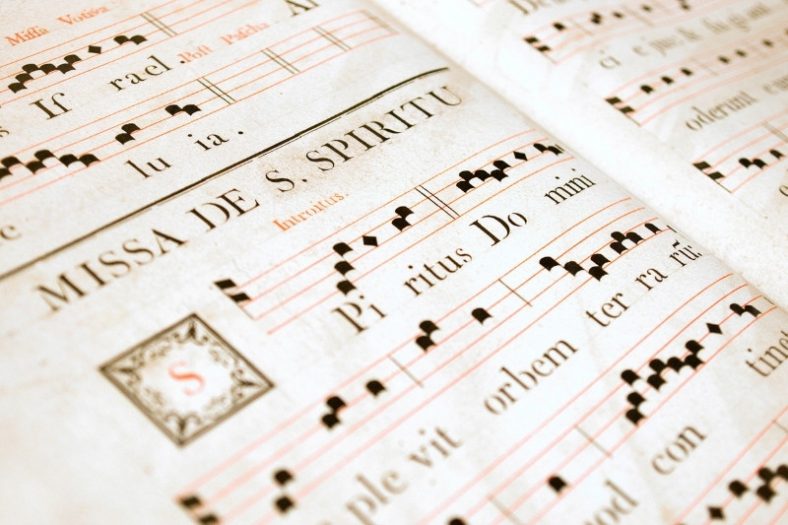
While the term “medieval” is very broad and is divided into further subdivisions, music that was played and created in the Middle Ages till the Renaissance can be classified as “medieval” music.
The Early period lasted from 500-1150 ADE, the High period during 1000-1300 ADE, and the Late period was 1300-1400 ADE.
Thematically, medieval music broadly encompassed religious themes but what is exciting about this period is that it laid the foundation for music theory and notation as we know it today.
There are several primary characteristics that define medieval music. Let us take a look at some of the primary ones in detail:
Characteristics of Medieval Music
1. Monophony
‘Monophony’ refers to the simplest musical texture, it comprises melody that is generally sung or played by a single instrument without any accompaniments.
In a choral setting, if all singers sing the same melody without harmonizing, then it is also considered an example of monophony.
Monophony in music can be traced back to the Early Middle Ages (late 5th and early 6th to 10th century) Christian songs, called plainchants. Plainchants are bodies of chants composed in Latin and were used in the liturgies of the Western Church. One of the most widely known plainchants is the ‘Gregorian’ chant, which exists even today.
These ‘plainchants’ were sung by monks and this style was prevalent in countries such as Italy, Spain, France, and Ireland.
The monophonic style later developed variations and some of the prominent ones were Mozarabic chant, Byzantine chant, Armenian chant, Ambrosian chant, Gregorian chant, and Beneventan chant.
Monophony still exists in modern music and listen to an example of early monophony below:
2. Rhythmic Modes And Conventions
While there was no way to notate rhythm in the Early Medieval Period, it is widely believed by music theorists that the first written rhythmic system was based on a series of modes and was developed in the 13th century.
The text known as ‘De Mensurabili Musica’ was written around 1250 by the French music theorist Johannes de Garlandia codifying this rhythmic plan. His work is considered seminal and illustrates the various modes prevalent during this period.
The treatise explains that there were 6 major modes in which longs and breves were arranged.
Each mode established rhythmic patterns in beats (‘tempora’) within a common unit of 3 tempora (a ‘perfectio’) that was repeated over and over again.
It is important to note that the notations did not have any text at the time and were based on a chain of ligatures (graphic symbols that denote two or more notes to be performed in a single gesture).
Thus the rhythmic modes were defined by the patterns of ligatures used. Once the rhythmic mode was determined, there was no deviation from it.
In 1280, the music theorist Franco Of Cologne wrote ‘Ars Cantus Mensurabilis’ (‘The Art Of Measurable Music’) and in this, he described a concept of differently shaped notes denoting entirely different rhythmic values. This, thus, had a large impact on subsequent European music.
This new style was heralded by the 1320 treatise composed by Phillipe de Vitry in ‘Ars Nova’ (‘New Art’). Some of the modern time meters can be traced back to this work. The new system introduced a smaller subdivision of notes (‘minim’) and the development of “mensuration” which could be combined in different ways to produce metrical groupings.
Vitry’s work is also responsible for modern time signatures as we know them today, indicating the proper divisions of a piece of music by incorporating a “mensuration sign” at its beginning.
The rhythmic complexity of Medieval music is roughly comparable to that of the 20th century, which it inspired.
3. Music Notation
A comprehensive notation system was developed during this period which became a foundation of Western music in the centuries that followed.
Early monophonic music was transmitted through oral tradition and had no notation. The Roman church made efforts to bring various liturgies together, and to create a new written standard where chants could be communicated far and wide without the need to learn them by ear.
Oral transmission had its limits and there was a need to develop a system that would be more effective and quicker to learn.
The first notations were thus developed in the form of ‘neumes’. These indicated various pitch movements that were indicated by various signs above the chant texts.
While no one knows exactly when and where they developed, Greek and Roman grammatical signs were used to indicate important points such as the rise and fall of the voice.
These neumes evolved into the ‘neumatic’ notation, which used basic symbols. It specified the number of notes and which direction they moved in.
Since there was still no way to communicate exact pitch, rhythm, or starting point in these neumes, the next development during this period was “heightened neumes”.
In these, neumes were placed at different places relative to each other. These gave a rough indication of the size and the direction of an interval.
These heightened neumes became the basis for the first 4-line staff developed by the music theorist Guido d’Arezzo (c.1000-1050). The new style of notation made it possible for a musician to learn a piece of music that they were unfamiliar with in far less time.
As explained in the earlier section, the system of music notation did not define rhythm even though chant notation underwent many new developments.
4. Vocal Music
Since medieval music was dominated by monophonic liturgical and secular music, the voice was the primary instrument for the most part.
While Latin plainchants were common in liturgical Early Medieval music, secular music was composed in vernacular languages. The earliest type known was ‘chanson de geste’ (songs of deed) and they were popularized by minstrels and traveling jongleurs.
With the development of polyphony in the latter part of the Medieval period, instruments were incorporated and there was a shift.
The origins of acapella music as we know it today can be traced back to this period. Listen to an interpretation below:
5. Troubadours, Trouvères And The Minnesänger
As part of secular music, troubadours and trouverès were an integral part of the propagation of music during the Medieval period.
A ‘troubadour’ was a composer and performer during the High Middle Ages (1100-1350). The custom began in Occitania during the late 11th century and then spread to Italy and Iberia. Their lyric-based poetry was often accompanied by instruments.
The themes of their music were mainly chivalry and courtly love. The texts were intellectual, metaphysical, and often formulaic. The works of the troubadours can be classified into 3 main categories: ‘trobar leu’ (light), ‘trobar ric’ (rich), and ‘trobar clus’ (closed).
The contemporaries of troubadours in France were known as ‘trouvères’. While trouvères were poet-composers as well, their languages of choice were the northern dialects of French.
Trouvères were frequently backed by the aristocracy or were aristocrats.
After Pope Innocent III initiated the Albigensian Crusade, the popularity of troubadours declined and some chose to migrate to Northern Italy, Spain, Portugal, or Northern France and continued to develop the local secular music tradition.
The Germanic counterpart of troubadours was known as the ‘Minnesängar’ tradition. While there are very few known sources about them, some of the known Minnesängars were Wolfram von Eschenbach, Walther von der Vogelweide, and Niedhart von Reuenthal.
6. Polyphony
While monophony was prevalent in the music of the Early Medieval period, the basis of Western music as we know it today: polyphony, developed in the Medieval period.
The earliest developments in polyphony came from two anonymous treatises called ‘Musica’ and ‘Scolica enchiradis’ which were believed to be widely circulated sometime during the last half of the 9th century.
The treatises described an already existing system in which there were 3 simple and 3 complex intervals. While one group has fourths, fifths, and octaves; the other comprises octave+fourths, octave+fifths, and double octaves.
This new practice was called ‘organum’ by the authors. Organum is further classified by the time period during which it was composed.
From this developed a second type of organum known as ‘free organum’, in which the parts could move not just in parallel motion but also in oblique, or contrary motion.
The last type of organum that came into existence was called the ‘melismatic organum’. In this, one sustained line was accompanied by a florid melismatic line.
This was also known as the ‘Notre Dame’ school of polyphony, named after the place where Léonin (the most famous polyphonic composer during this period) was stationed.
It is important to note that in the Medieval period music theory dealt with the understanding and arrangement of the pitch. Scales, as we know them today, were known as modes. We will learn more about them later on.
7. Sacred vs Secular: Diversity In Themes
There were 2 main types of composition in Medieval music. These were ‘sacred’ or ‘secular’.
One of the biggest examples of sacred Medieval music was Gregorian chants.
In around 1011AD, the Roman Catholic Church wanted its Mass and chant to be spread across its entire empire. This standardization meant that Rome would be the religious center of Western Europe and Paris would be the political one. This standardization effort consisted of a combination of Roman and Galician liturgies.
Named after Pope Gregory I, ‘Gregorian’ chants were new standard chants that were spread across the empire by trained singers under his and Charlemagne’s reign.
Other notable chant traditions were the Ambrosian chant in Milan and the Mozarabic chant which thrived in certain designated Spanish churches.
Another type of musical tradition that developed was the ‘liturgical drama’ during the 10th century. These incorporated poetic embellishments to liturgies and were eventually turned into short plays performed by monks, nuns, and priests. They were generally always sung and there is very little information available on if there were instrument accompaniments to them.
In contrast, secular music themes were first found among the works of the ‘Goliards’. They were itinerant poet-musicians in Europe from the 10th to the middle of the 13th century.
They wrote and sang in Latin and most of them were scholars or ecclestiacs. The themes ranged from celebrating religious ideals to more profane ones which dealt with drunkenness, debauchery, and even lechery. The ‘Carmina Burara’ is one of the most important sources of Goliard’s chansons.
In the mid 13th century, songs known as ‘cantares’ or ‘trovas’ were compiled in songbooks called ‘cancioneiros’. They were part of the Galician-Portuguese school which was inspired by the Occitan troubadours to a certain extent.
The ‘Cancineiros da Ajuda’, the ‘Cancioneiros da Vaticana’, and the ‘Cancioneiros Colocci-Brancuti’ are 3 prominent anthologies of this period.
The Galician-Portuguese cantigas were primarily of three types: male-voiced love poetry (‘cantigas de amor), female-voiced love poetry (‘cantigas de amigo’), or poetry of mockery and insult (‘cantigas d’escarnho e de mal dizer’). These were all strophic songs with musical accompaniment or introduction on a stringed instrument.
Popular Medieval Songs
Lamento di Tristano: This Medieval Italian song tells the story of two lovers and the song is from the point of view of Tristan. It is reminiscent of ‘Romeo And Juliet’ of the later Renaissance period and has been incorporated in an opera by Wagner.
L’autrier m’iera levaz: Composed in 12th century France, this is an example of a ‘pastourelle’ (secular music depicting courtly love). The theme of this song is a French knight professing his love for a woman of common origin but her turning down his advances.
Greensleeves: This was an English folk song that emerged in the 16th century. While the lyrical theme is associated with Henry VIII trying to woo Anne Boleyn, there is a distinct Italian influence in the composition.
Instruments Used In Medieval Music:
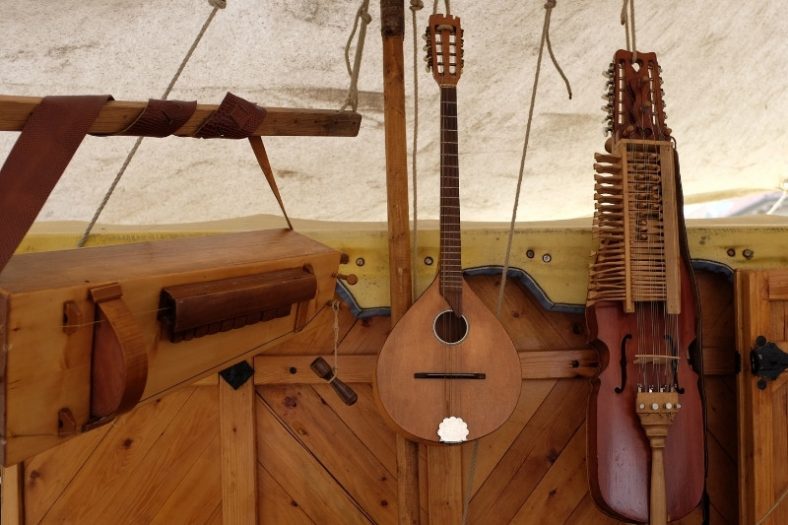
Many of the modern instruments existed in the Medieval period but they were generally made with different materials. Some of the most common ones were:
The flute: Instead of being made of metal, they were made of wood and were either side-blown or end-blown. They had holes that needed to be covered by the performer with their fingers as they did not have any complex key mechanisms or airtight pads.
Recorders: Like flutes, these were also made of wood and the pan flute was especially popular. It is said to have originated during the Hellenic period.
Gemshorn: These were similar to recorders with holes in their front. Gemshorns are considered to be a part of the ocarina family.
Lutes: These form the basis of the modern guitar. They were fretted, stringed instruments with a hollow and pear-shaped body.
Other plucked instruments commonly used during this period were the gittern, mandore, citole, and psaltery.
Dulcimer: The strings of this instrument were originally plucked. But with the arrival of metal strings in the 14th century, performers would strike the strings with hammers that were specially designed for the instrument.
Lyra: These were bowed, stringed instruments that resemble a modern violin. They appear in the Byzantine period. The Arabian version was the ‘rabab’, which also needed to be played by moving a bow with tensioned hair over the tensioned strings.
This period also saw some instruments such as the urghun (organ), shilyani (Medieval equivalent of a harp or lyre), salandj (resembling a bagpipe), and the hurdy-gurdy which is still used today.
During the medieval period, rudimentary pipes, organs, fiddles (or vielle), and sackbuts (modern trombones) were created alongside instruments without soundboxes like the “jew’s harp.”
Types Of Medieval Music
In the Early Medieval period, the liturgical genre of vocal music was popular. They were monophonic Gregorian chants. Instrumental music was mainly improvised.
In the High Medieval period, multiple melodic lines were performed simultaneously (polyphony) especially during the 13th and 14th centuries. The Ars Nova style was heralded in the 1300s and it involved interwoven voices. This marked a shift to a more expressive style that further developed during the Renaissance period.
The early monophonic plainchants transitioned to heterophonic plainchants. In these, two performers sang the same melody but each altered the ornamentations of the melody.
The most popular and sophisticated type of Medieval polyphony was known as a ‘motet’, which came from the ‘clausula’ genre of plainchant. Those early motets were sacred or liturgical, the genre expanded to more secular themes towards the end of the 13th century. Courtly love was a common theme and popular motets comprised of lyrics about a man’s love for a noblewoman.
During the Renaissance era, these medieval motets were further developed. The Italian genre of the secular ‘Madrigal’ featured fluidity and motion in the melody line. This eventually gave birth to polyphonic ‘canons’ often heard in Classical music.
As the concept of court performances for the aristocracy and theatres grew, purely instrumental music also developed during this period. Improvised dance music around familiar tropes was the biggest genre of instrumental music. In Trecento, Italy, the ‘Ballata’ was a popular secular genre of instrumental music.
Medieval music scales
Most of us are familiar with scales in Western music. One of the fascinating aspects of Medieval music is that there were different ‘modes’, which resemble modern scales.
A system for determining pitches was created during the Middle Ages, in which whole and half steps were used to organize them. The modal system of the Medieval period provides the rules and melodic writing that are still in use. They were known as ‘church modes’ called:
- Dorian
- Hypodorian
- Phrygian
- Hypophrygian
- Lydian
- Hypolydian
- Mixolydian
- Hypomixolydian.
Practical application and information on these modes were codified by music theorist Johannes Afflighemensis in the 11th century. There are descriptions of three defining elements in each mode. These were ‘finalis’ (the final), ‘tenor’ or ‘confinalis’ (the reciting tone), and ‘ambitus’ (the range).
The mode’s main feature was the ‘finalis,’ which was almost always the final note in a chain. The tenor/confinalis serves as the focal point for the melody and is most repeated in the piece. The ambitus determines the upper and lower tones for a mode.
These 8 modes can be further divided into 4 categories based on their finalis.
The Medieval modes were numbered in Greek numbers from 1 to 8 or in pairs known as ‘maneriae’. The modes d, e, f, and g are their final are put into groups called ‘protus’, ‘deuterus’, ‘tritus’, and ‘tretardus’ respectively. These are then further divided into “authentic” or “plagal” depending on what the mode is and the range of the mode in relation to the final.
In an authentic mode, the range is about an octave and starts on the final. Plagal modes also cover about an octave but start on the perfect fourth below the authentic.
Despite Greek names, these ecclesiastical modes are not related to the modes as set out by Greek theorists. The heavy use of Greek terminology does however indicate a possible origin of the Byzantian liturgical melodies. This system is also known as ‘octoechos’ and is divided into 8 categories called ‘echoi’.
What Did Medieval Music Sound Like?
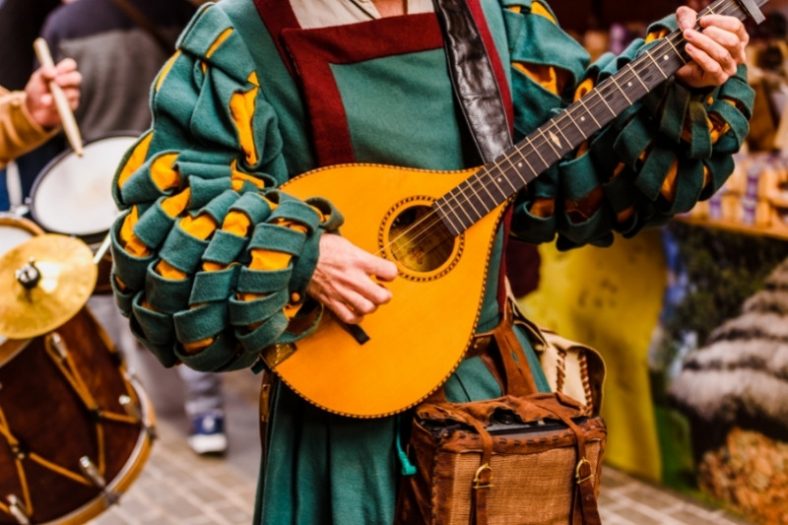
It is often difficult to imagine what Medieval music sounded like because over the centuries, musical traditions have greatly changed and only limited information is available in the form of written notations.
Due to the technology available at the time, there are no recordings of the music of the era. However, many modern musicians have been able to put the pieces of the puzzle together and reinterpret and recreate some of the music of the troubadours that have survived. One of the modern interpretations of the troubadour Gaucelm Faidit can be heard in the below video.
Among monophonic plainchant, Hildegard von Bingen was a famous German composer during the High Middle Ages. Listen to Voices of Angels – Voices of Ascension below.
The Gregorian chants have been reimagined by many modern musicians and composers. The below video is a very modern take on the traditional choral style of vocals and polyphonic plainchants.
But of course, there is a more authentic take on Gregorian chants like here.
Since we have discussed the Notre Dame School in this article, here is Lèonin’s Ensemble Organum.
Final Thoughts
Like with any other period of history, the Medieval period existed only for a particular time in the history of humankind. In Medieval music, this was marked by the emergence of ‘Ars subtilior’ and historians argue that this was a way to meld the French and Italian styles together.
Ars subtilior was highly stylized and its rhythmic complexity was not matched in the periods that followed, till the 20th century. There were extreme syncopations, mensural trickeries, and a few examples of ‘augenmusik’ such as Baude Cordier’s chanson written in the shape of a heart on the manuscript.
While the practice of isorhythm (as under the Ars nova tradition) continued to develop it did not reach the highest degree of sophistication till the early 15th century.
The Ars subtilior style employed isorhythm in all textures, which was comparable to integral serialism of the 20th century, with its methodical arrangement of rhythmic and tonal components in a composition.
The ‘Chantilly Codex’ is a surviving chanson of the Ars subtilior tradition.
The Renaissance, which marked the end of the Medieval period saw the rise of composers such as John Dunstaple, Guillaume Du Fay, Zacara da Teramo, Paolo da Firenze, and others who continued to develop elaborate forms of polyphony.
It is important to remember that most music theory as we learn it today has its roots in this period and composers such as Lèonin inspired 20th-century composers such as John Luther Adams and minimalist composer Steve Reich.

